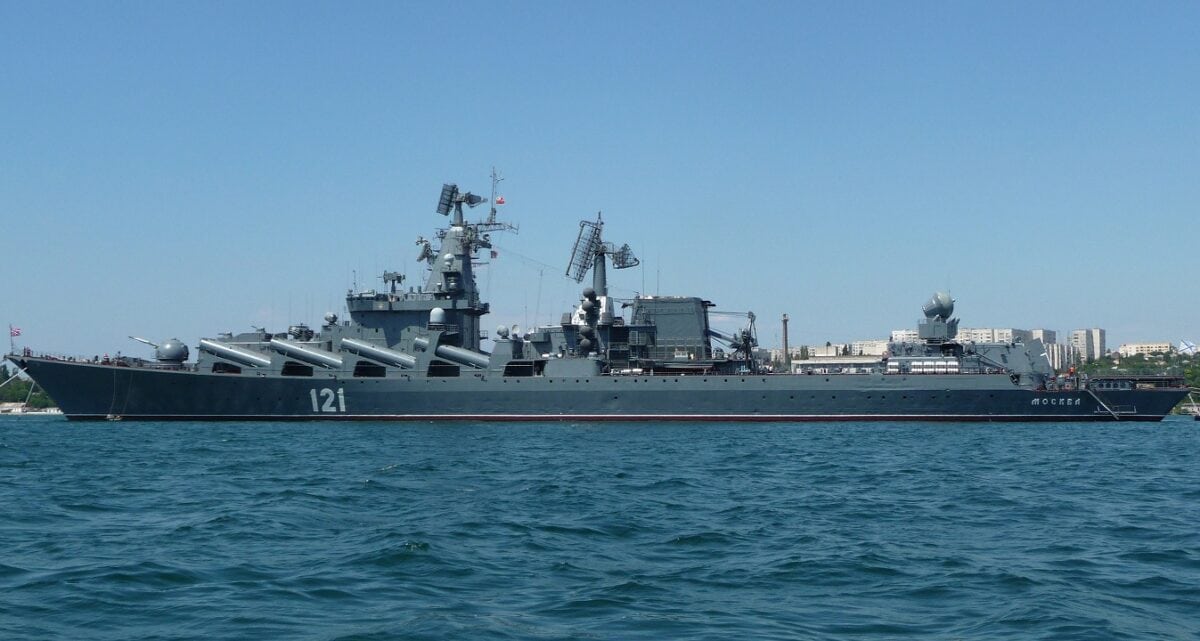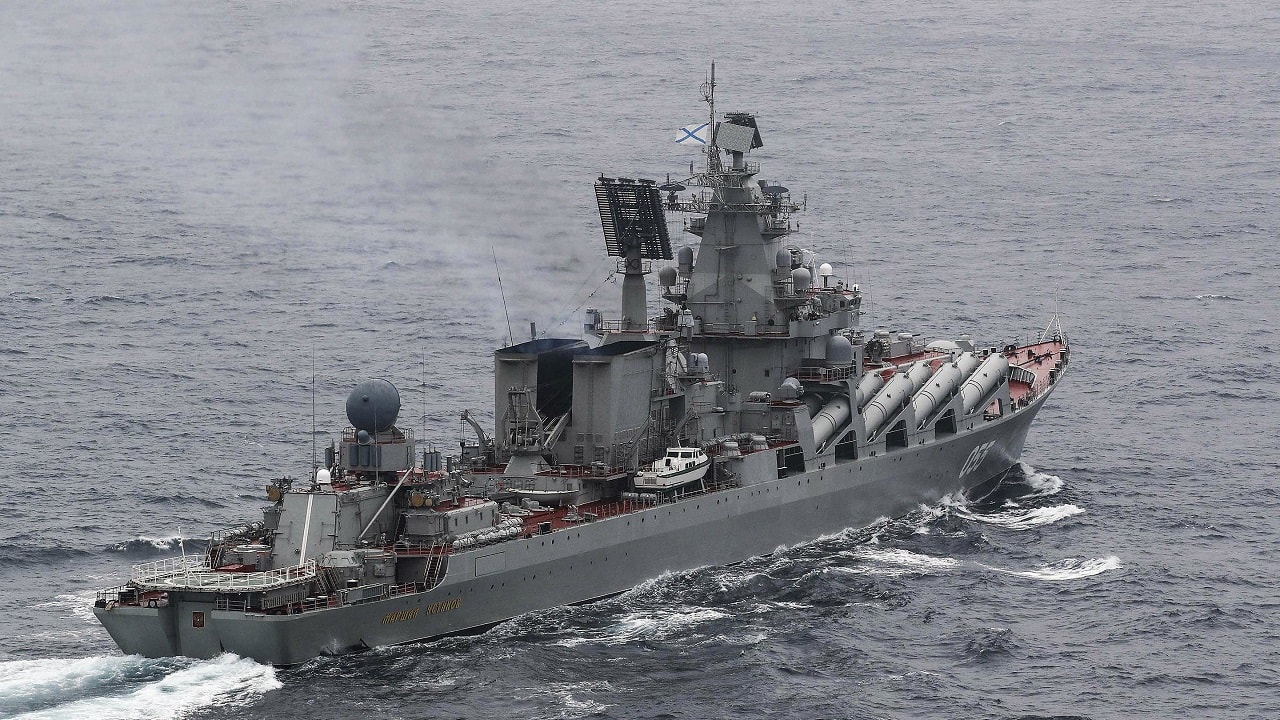Russia is moving some of its most lethal naval combatants into position in the ongoing crisis with Ukraine. Three Slava-class cruisers, the flagships of the Northern, Pacific, and Black Sea Fleets, have joined together for what is probably the first time ever. Marshal Ustinov of the Russian Northern Fleet, has deployed to the Mediterranean in apparent coordination with her sisters Moskva, flagship of the Black Sea Fleet, and Varyag, flagship of the Russian Pacific Fleet.
The Slavas displace over 11,000 tons at full load and can make 32 knots at top speed. Only three cruisers were completed before the collapse of the Soviet Union; another has remained incomplete in Ukraine, and between two and six others were canceled, depending on sources. Moskva, Marshal Ustinov, and Varyag were completed in 1982, 1986, and 1989 respectively, each at Mykolayiv shipyard in what is now Ukraine. Work on a fourth ship, Ukrainya, ceased after the collapse of the Soviet Union, and the incomplete hulk was transferred to Ukraine. The ship remains incomplete as Ukraine lacked the interest or funding to put her into commission; efforts to sell the cruiser to Russia, India, and China have failed for various reasons over the past two decades.
The Slava-class are visually striking, characterized by a set of massive missile canisters on each flank of the superstructure. A ship built in the last two decades would carry missiles like these in a vertical launch system, saving space, decluttering the deck, and allowing greater flexibility with respect to weapons loadout. These canisters carry the P-500 Bazalt missile, a carrier-killing anti-ship missile designed to attack NATO carrier battle groups. The missiles, with a range of some 300 miles, could be coordinated and directed by independent platforms (such as a maritime surveillance aircraft) and salvos of the missiles could communicate with one another to detect and attack their targets. Reports suggest that all three have been equipped with the P-1000 Vulcan, a modernized version of the missile. By comparison, the Vulkan is three times as large, four times as fast, and carrier a warhead twice as large as the American BGM-109 Tomahawk, although the latter has three times the range and (crucially) can attack land targets. Given that Ukraine currently lacks carrier battle groups, this limits the utility of the missile in this particular crisis.
The Slava-class defensive armament includes S-300 “Grumble” surface-to-air missiles with a range of about sixty miles, and anti-submarine mortars and torpedoes. The most important weapon that the three cruisers might be able to use against Ukraine is their twin 130mm gun, capable of firing in excess of 10 rounds per minute to a range of more than 20 kilometers. This kind of coordinated fire could devastate land-based installations, whether in preparation for an amphibious assault or independently. However, given that all three cruisers have deployed to the Mediterranean for exercises in recent weeks (with Moskva actually leaving the area of potential hostilities) it seems more likely that the ships are intended as a message to NATO. The USS Harry S. Truman and her battlegroup have been deployed to the Mediterranean in part as a show of force intended to indicate NATO solidarity.
Russia has modernized and renovated all three Slava-class cruisers during the past three decades, although most of the major weapon systems remain the same. Some reports indicate that Russia expects to keep the ships in service for another twenty years, which perhaps says more about Russian shipbuilding capacity than about the cruisers themselves. For whatever reason Russia has yet to deploy its largest and most lethal surface warship, the battlecruiser Pyotr Velikiy of the Northern Fleet. The battlecruisers have been extremely active over the past decade, which may explain her absence during this crisis. Russia’s aircraft carrier Admiral Kuznetsov remains in refit following a fire and a disastrous encounter with a shipyard crane.

Slava-class cruiser. Image Credit: Creative Commons.
The three Slavas may not contribute that much of actual operational utility to Russia’s buildup along Ukraine’s border. Indeed, if the Russian ships somehow found themselves in combat against NATO forces in the Mediterranean their prospects for survival would be dim. But there is no doubt that the Slava-class deployments are intended to offer a powerful, visible warning to both NATO and to Ukraine.
Now a 1945 Contributing Editor, Dr. Robert Farley is a Senior Lecturer at the Patterson School at the University of Kentucky. Dr. Farley is the author of Grounded: The Case for Abolishing the United States Air Force (University Press of Kentucky, 2014), the Battleship Book (Wildside, 2016), and Patents for Power: Intellectual Property Law and the Diffusion of Military Technology (University of Chicago, 2020).

